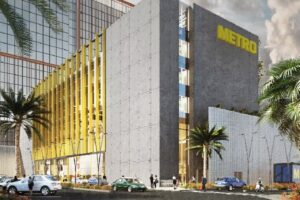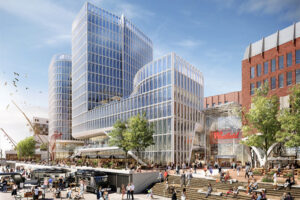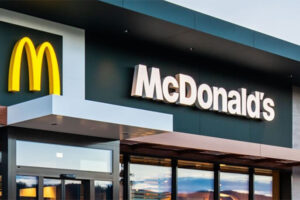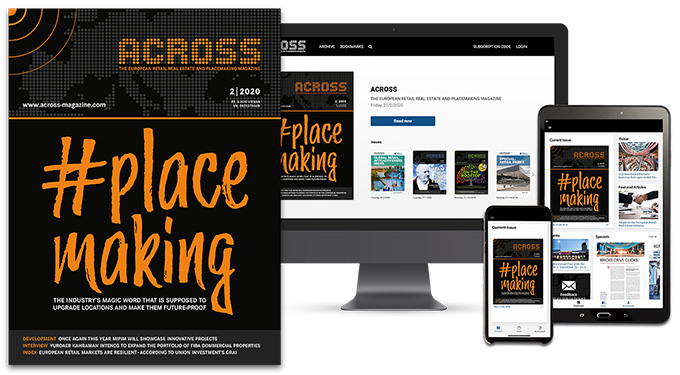By Joseph Jarvis
As Proptech continues to grow as a sector, we see numerous opportunities to further enhance the commercial tenant experiences.
Integration of data & technology
Property management software has made it significantly easier to track crucial performance metrics. Let’s take footfall as one example. Chainels, a property management platform, seamlessly integrates with footfall sensors to feed data directly into the system. These sensors enable commercial tenants and property managers to monitor performance data accurately.
Likewise, turnover data receives the same attention. Through Chainels’ dedicated turnover reporting module, commercial tenants can precisely report their turnover data. As a landlord, you can also enable timely reminders to ensure tenants meet reporting deadlines. Accurate data helps identify patterns and act on them, ironing out inefficiencies and optimizing retail park operations. For instance, a decrease in footfall and turnover may prompt an investigation into external factors like road closures or construction that impact these metrics.
Alternatively, investing more in marketing initiatives may increase awareness and attract more visitors to the retail park. Hosting events or introducing new businesses can also generate excitement and boost foot traffic. In cases where retail parks experience high footfall but low turnover, collaboration with commercial tenants becomes essential to enhance conversion rates once shoppers enter the premises.
Without these valuable data insights, the causes of issues affecting the retail park’s performance would remain elusive, leaving landlords ill-equipped to address them effectively.
Sustainability and green initiatives
When considering sustainability initiatives, retail parks may not be the obvious choice, but they can certainly play a significant role in your real estate portfolio’s ESG (Environmental, Social, and Governance) properties.
A notable source of emissions in retail parks is attributed to both employees and shoppers using cars for transportation. While influencing the commuting behavior of shoppers might be challenging, there is an opportunity to encourage more eco-friendly travel among tenant businesses.
One effective approach is to implement bike sharing initiatives, enabling tenants to rent bicycles for their daily commutes. Using a tenant experience app equipped with a booking module, you can streamline the process, making it effortless for tenants to reserve bikes through a user-friendly platform. Moreover, the app’s communication features, like the timeline and chat functionalities, can be utilized to organize initiatives like carpooling, facilitating efficient ride-sharing among tenants.
Additionally, you can leverage these features to communicate tips and practices to save energy and reduce waste, fostering a culture of sustainability within the retail park community. By integrating these measures, retail parks can align themselves with ESG principles and contribute to a more sustainable future.
Diverse Tenant Mix
Amid the dominance of online shopping, the physical retail landscape faces challenges in attracting visitors. However, one effective approach to address this issue is to transform retail parks into mixed-use spaces, fostering a thriving local economy. By incorporating residential or office spaces within the existing retail areas, retail park owners can stimulate the growth of a local economy while providing shoppers with additional incentives to visit the property. This strategic move offers multiple benefits. Firstly, local residents and workers residing in the mixed-use development will become a steady source of footfall for tenant businesses.
Secondly, residents and workers will appreciate the convenience of having a variety of retail and hospitality amenities within easy reach, enhancing their overall living and working experience. In this way, retail park owners can revitalize their properties, create a harmonious blend of commercial and residential elements, and thrive in a retail landscape where online shopping may be dominant. By embracing mixed-use spaces, retail parks can evolve to meet the changing demands of modern consumers while fostering a vibrant and self-sustaining local community.
Reimagining Shopping Convenience
Let’s face it, retail parks are convenient but no one can beat the convenience of online shopping. So what does this mean for retail parks? Are they forever doomed to the trash pile of history, soon to be demolished and replaced by Amazon warehouses and Tesla charging stations?
No. In fact, far from it. The advent of e-commerce is not a death-knell to the retail park but a golden opportunity for these spaces to reimagine themselves.
For all the convenience of online shopping, people will almost always prefer in-person experiences to purely digital ones. The fact that consumers can shop just as easily online simply means that retail parks can get more creative when it comes to bringing in shoppers.
- Emphasize social elements: Encourage social interactions by creating communal spaces, food courts, cafes, or playgrounds for kids where shoppers can relax and socialize. This creates an opportunity to attract a more diverse range of commercial tenants that you might not have considered in the past.
- Focus on local and independent businesses: Support local and independent retailers by inviting them to set up shops in the retail park. This can attract customers who appreciate unique and locally sourced products.
- Click-and-drive-thru: Offer a drive-thru lane or designated area where customers can place orders online and have their items brought directly to their cars without having to enter the stores.
- Family-friendly amenities: Install family-friendly amenities like play areas, baby-changing facilities, and nursing rooms to cater to the needs of shoppers with children.
- Personal shopping services: Provide personalized shopping assistance or concierge services for customers, helping them find the products they need and offering tailored recommendations.
Imagining the retail park of the future
The future of retail parks holds great promise, but it will require a willingness to adapt and innovate in response to changing consumer demands and technological advancements. By embracing technology, sustainability, and the ever-evolving preferences of their customers, retail parks can continue to be vibrant, dynamic destinations for generations to come. Those that successfully navigate this transformation will emerge as the trendsetters in the retail industry, driving the way we shop, interact, and experience the world of commerce.

Joseph Jarvis
Joseph Jarvis is Content Marketer at Chainels





